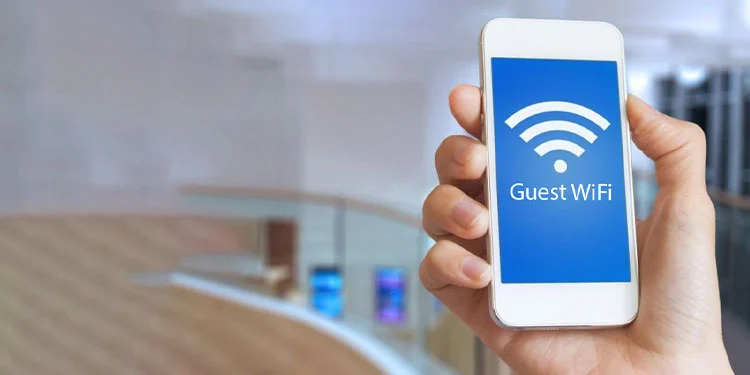So you’re hosting a party, and your guests can’t be without their precious TikTok for more than five minutes. But before the fun begins, you find yourself fiddling with your router settings, exploring an intriguing option called “enable guest network.” If you’re wondering what this setting does and whether it’s designed for occasions just like your gathering, you’re in the right place.
What’s the Deal with Guest Networks?
The main point of a guest network is pretty straightforward: it allows anyone connected to it to access the internet but prevents them from accessing any other devices on your network. So, you can rest easy knowing your guests won’t be pranking you by printing rude messages on your printer.
But how exactly does your router achieve this feat? It’s all about the magic of internal software rules and network segmentation.
Network Segmentation
Most routers use internal software rules to determine how network traffic is managed. When you enable a guest network, your router typically sets up a different subnet, sometimes on a different virtual LAN (VLAN), for your guests. This segregation is what keeps your guests away from your main network and its devices. The good news is that consumer-grade routers usually handle these complexities for you, so you don’t need to become a networking guru.
Enabling the Guest Network
Once you hit that “enable guest network” button, your router goes to work in the background. It creates a new SSID, which is the name you see in the list of Wi-Fi networks on your devices. This SSID is what your guests should be connecting to, making it crystal clear which network is intended for them. However, you can always customize the SSID to add a touch of personality to your Wi-Fi party.
Keep it Secure
While guest networks are excellent for keeping traffic separated, you shouldn’t merely enable the guest network and assume everything is fine. There are a few important security considerations to keep in mind.
Use a Password
It might be tempting to leave your guest network open for convenience, but that’s not the safest option. Without a password, anyone in close proximity to your router can connect to it, potentially engaging in activities that could be traced back to you. Moreover, an open guest network exposes your guests’ internet activity to potential spying or data theft, as unencrypted data can easily be intercepted. So, do yourself and your guests a favor—assign a password.
Simplify Access with QR Codes
To make things easy for your guests, you can generate a QR code with free online tools and print it out. Your guests can scan the QR code to join your password-protected guest network without the hassle of typing in a password. This tech-savvy move will undoubtedly elevate your party to official “cool kid” status.
Overcoming Limitations
Now, here’s a common limitation of guest networks: what if you want your guests to access a part of your home network? This can be a challenge, especially if someone wants to cast a video to your TV using Chromecast or if gaming is on the agenda. Guest networks typically prevent guest clients from seeing each other and accessing devices on your main network.
In such cases, you may need to delve into more advanced configurations if your router allows it. Alternatively, you can simply grant your guests access to your main network, but, of course, you’ll want to ensure you’re partying with people you trust.
So there you have it, the lowdown on guest networks and why they’re a great addition to your Wi-Fi party arsenal. We hope this information helps you host a seamless and secure gathering. Now, go ahead and enjoy your cool kid party with confidence!
In case you have found a mistake in the text, please send a message to the author by selecting the mistake and pressing Ctrl-Enter.
#Benefits #Guest #Networks #WiFi #Party


